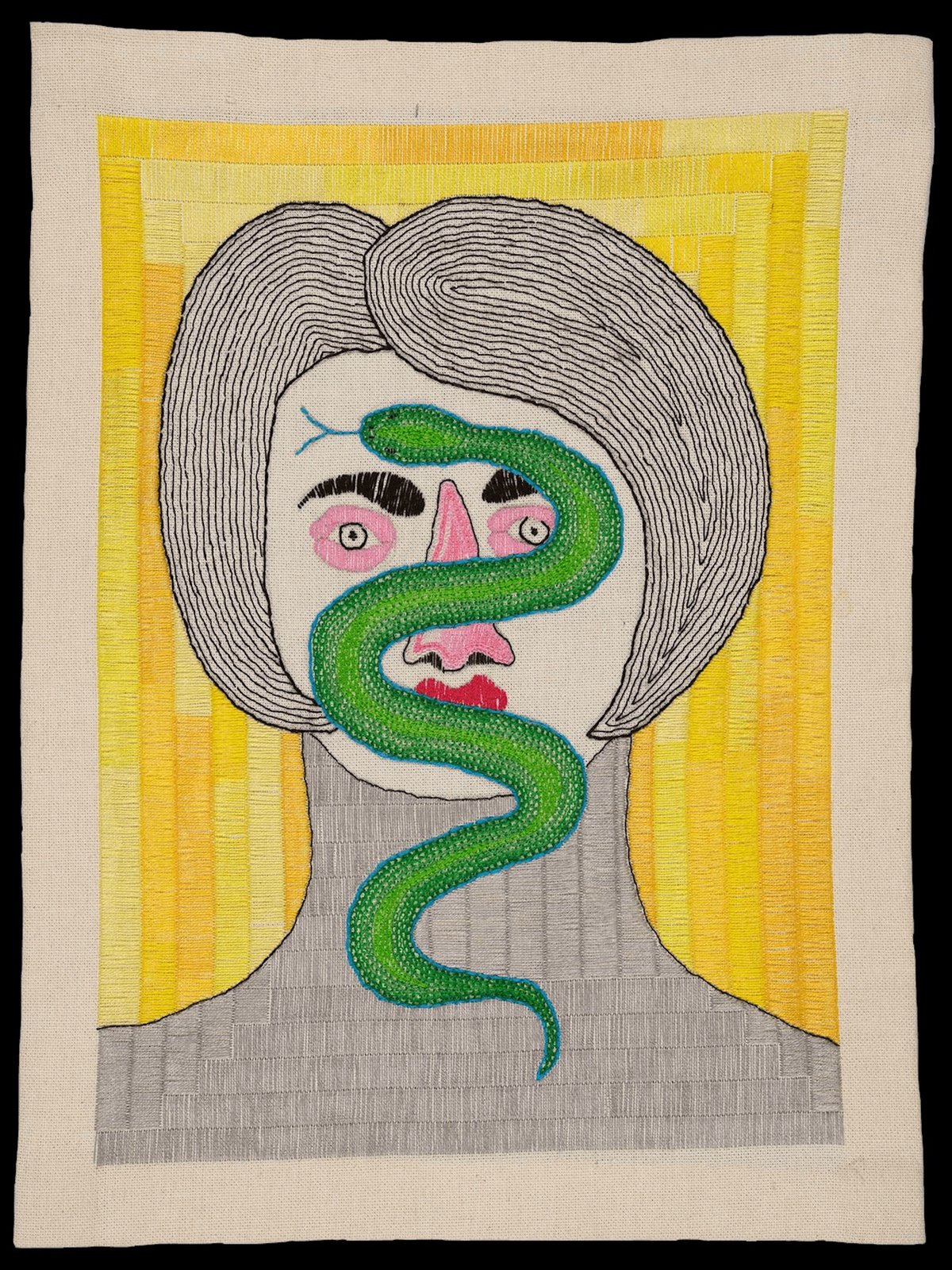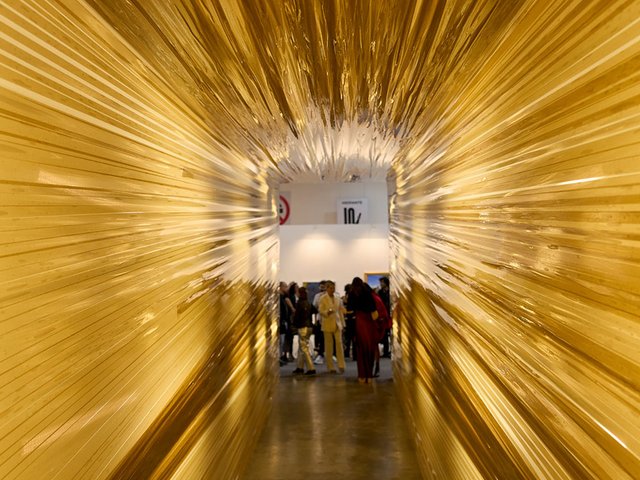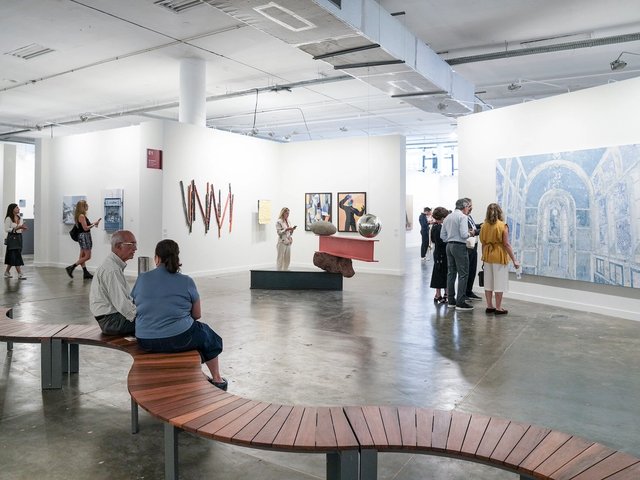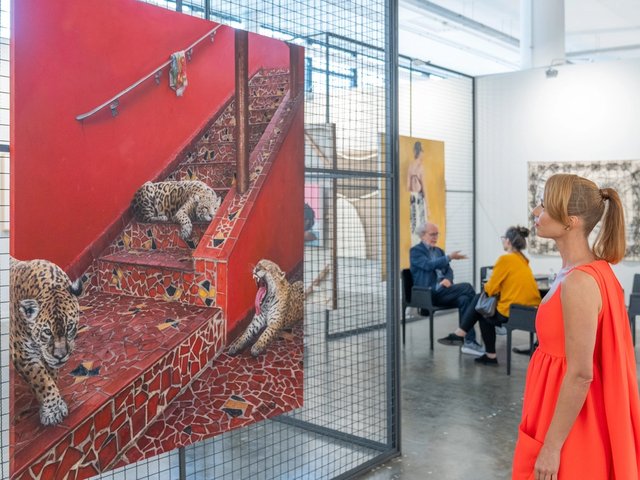Art Toronto, Canada’s largest art fair, returns to the Metro Toronto Convention Centre this week (23-26 October) with more than 100 galleries participating. Now in its 26th edition, the fair is launching Arte Sur, a new curated section focused on Latin American art. The move comes amid the on-again, off-again trade war that American president Donald Trump set off between Canada and the US, bringing uncertainty but also diversification, with the Canadian commercial sector signalling intent to build new connections.
“We are tapping into an international dialogue with great intention, building a real conversation between the continent’s art of the north and south,” Mia Nielsen, Art Toronto’s director, tells The Art Newspaper.
The Mexico City-based curator Karen Huber, founder of the namesake gallery, is behind Arte Sur. She enlisted 11 galleries, including Swivel from New York (representing Latin American artists) and Alejandra Topete from Mexico City to Subsuelo from El Rosario, Argentina, and Judas Galería from Valparaíso, Chile—all first-time participants in Art Toronto.
Arte Sur took shape early this year during the string of exhibition openings and fairs around Zona Maco in Mexico City, where Nielsen spent weeks as the tariff war intensified. Mexico—long Canadians’ second‑most‑visited international destination—saw arrivals from Canada surge 11.8 % in the first half of the year, after Trump’s “51-state” rhetoric sparked a US boycott movement.
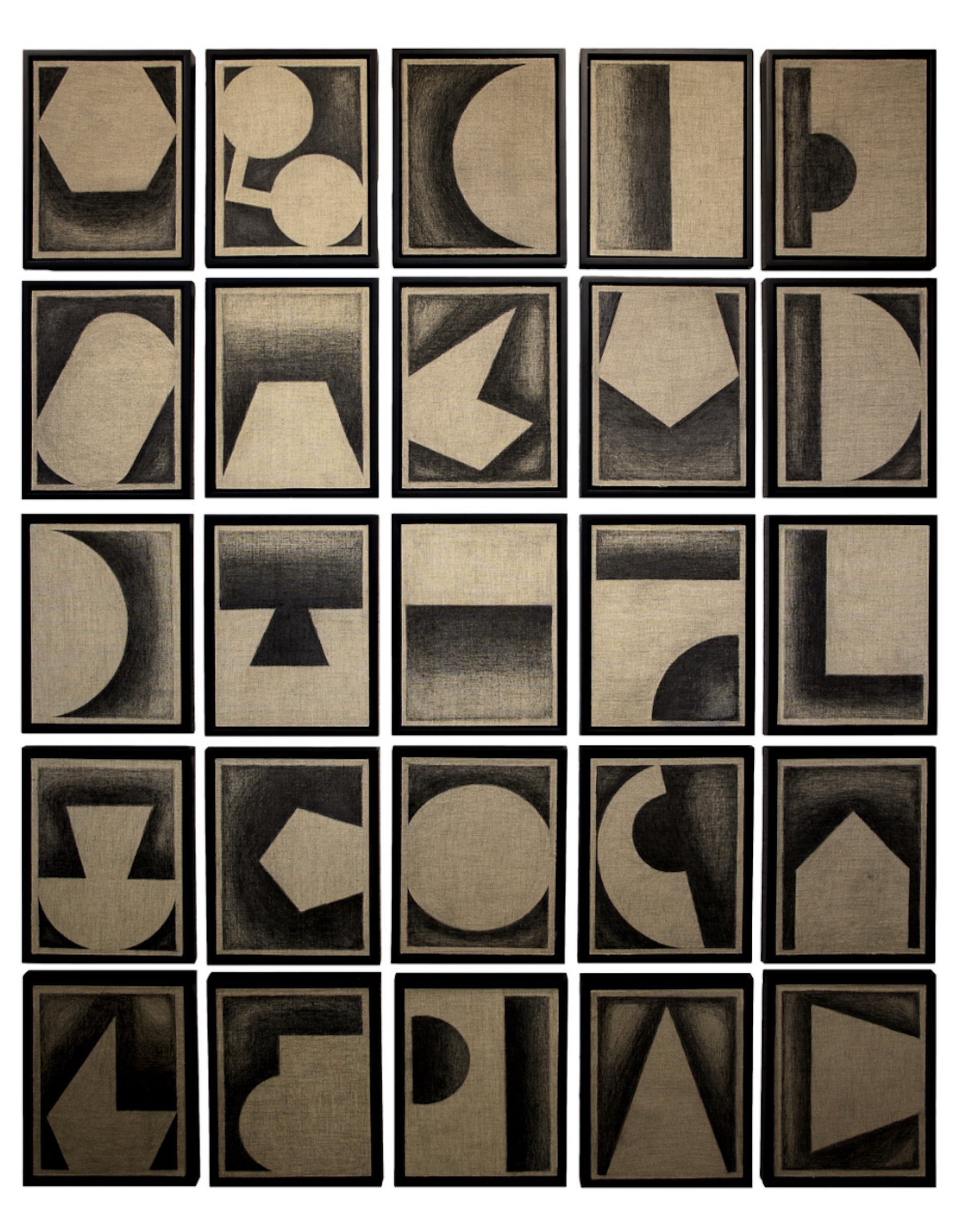
William Gaber, Dualidad II, 2024 Courtesy Alejandra Topete Gallery
Despite concerns about over-tourism and gentrification, international interest in the Mexico City art scene continues to rise. “Since 2023, Canadians have increasingly visited Mexico City’s Art Week,” says Huber, who is a member of Zona Maco’s selection committee. The Mexico City gallerist and Arte Sur participant Alejandra Topeteconcurs: “Canadians increasingly visit my gallery and love the artworks.”
Canadian museum groups, including those from the Art Gallery of Ontario (AGO) and the National Gallery of Canada in Ottawa, have also visited Zona Maco. The fair, along with others staged the same week like Material and Salón Acme, has a firm Latin American focus.
This dynamic somewhat challenges Canadian collectors’ reputation for only buying locally, especially amid rising nationalist sentiment fuelled by Trump’s threats. “Many collectors are rightly focused on the extraordinary art produced by a small population across a vast landscape,” Nielsen says. “However, Canadians are also global citizens with an innate curiosity. There is a lot of interest in what goes on in other places.” She adds that Latin American galleries have been warmly received in previous editions.
Resonances with Canadian audiences
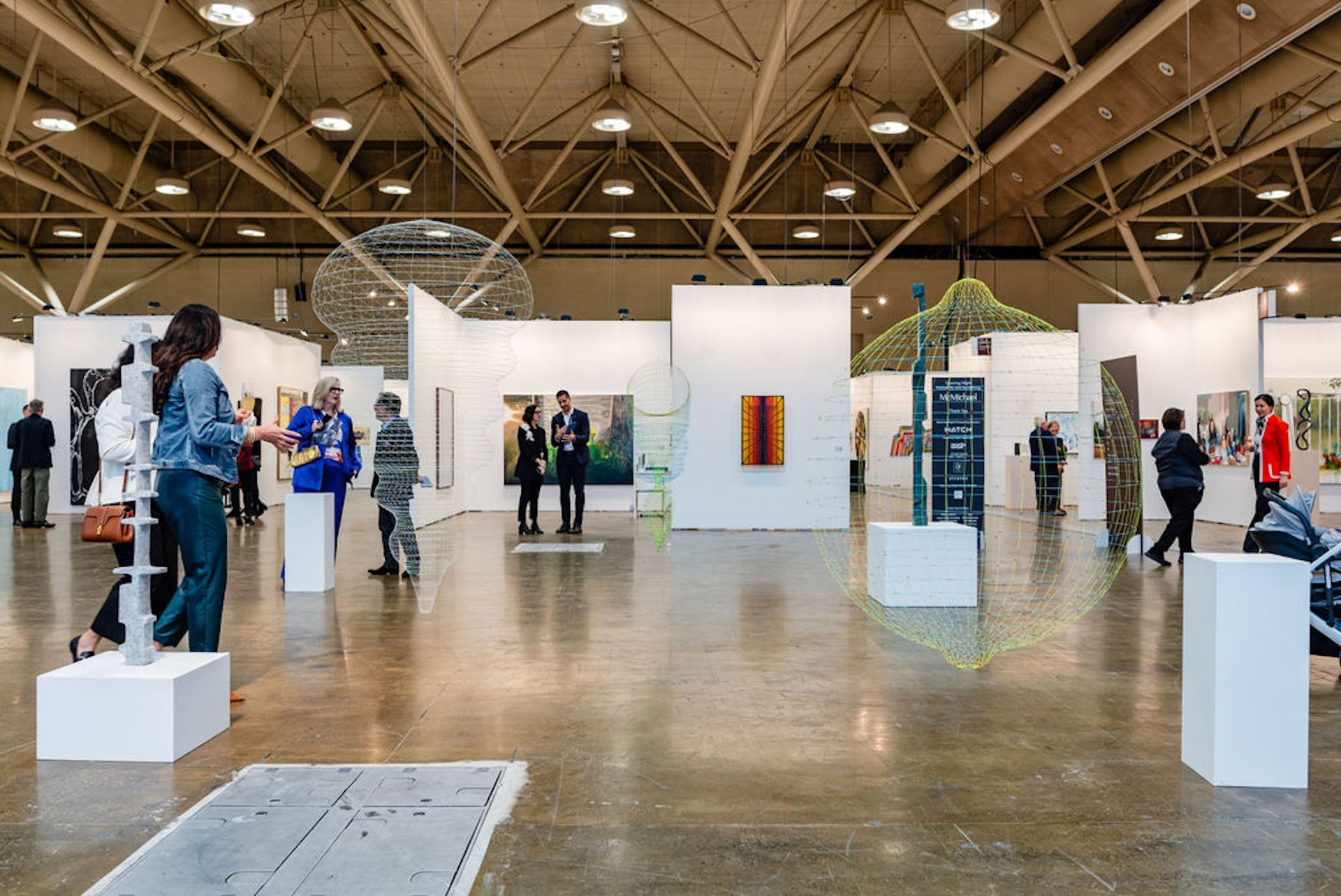
Visitors at the 2024 edition of Art Toronto Courtesy Art Toronto
Huber is confident that Arte Sur’s lineup—with more than 30 artists mainly from Mexico, Costa Rica, Argentina, Chile and Peru—will resonate with Canadian audiences. “Strong connections between arts and crafts and fine art, including ceramics and textiles, are present, while also revealing how identity, landscape, territory and social themes intersect,” she says.
The featured Mexican artist Adela Goldbard, for instance, collaborates with Oaxacan artisans to create textile works addressing social issues (showing with Proxyco), while the Chilean artist Paloma Castillo’s meticulous embroideries weave together irony, humour and dissent (showing with Isabel Croxatto). The section will also feature works by the Mexican artist William Gaber (showing with Alejandra Topete), representing the country’s strong tradition of abstraction.
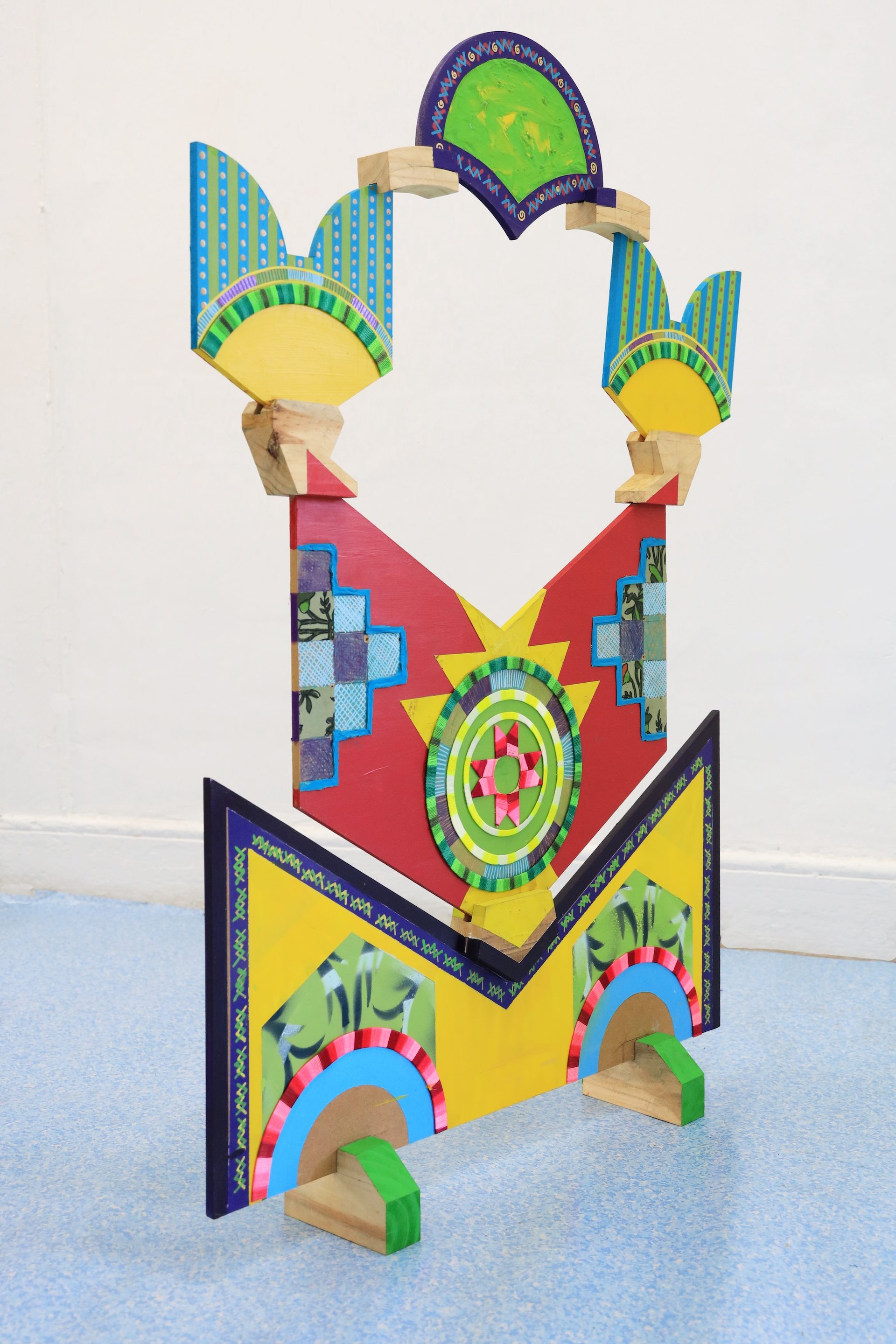
Natalia Montoya, Tótem de emergencia n°4, 2021 Courtesy: Judas Galería
This year, more than half of Art Toronto’s participating galleries will show works by Indigenous artists, the fair’s most substantial representation yet. Arte Sur will also include works by artists of Indigenous origin. Among them are Sheroanawe Hakihiiwe, a Yanomami artist from Sheroana, a Venezuelan Amazonian community (showing with Proxyco), and Natalia Montoya, an Aymara artist from the Andes (showing with Judas).
“It will be interesting to see how Indigenous artists coming from the Amazon, Canada and Australia dialogue,” Nielsen says, adding that the range of presentations will also illuminate “what it means to be an Indigenous artist today”.
Opportunities and challenges
The Arte Sur section will feature a few participants who may be familiar to Canadian audiences. The New York-based gallery Proxyco and Lima-based Crisis Galería, for instance, work with artists who have participated in Canadian exhibitions, like Hakihiiwe (featured in a 2022 show at the Power Plant), and others in last year’s Toronto Biennial of Art. The late Costa Rican artist Gerardo Ramírez (1948-2024) lived in Canada; the gallery deCerca from San José, Costa Rica, will show his work at Art Toronto. But for most of the artists featured in Arte Sur, the fair will be their first exposure to the Canadian scene.
“We are fostering new markets that enrich us culturally,” Nielsen says. Huber adds that other fairs could benefit from replicating Art Toronto’s model: “A specific Latin American section is a powerful statement.”
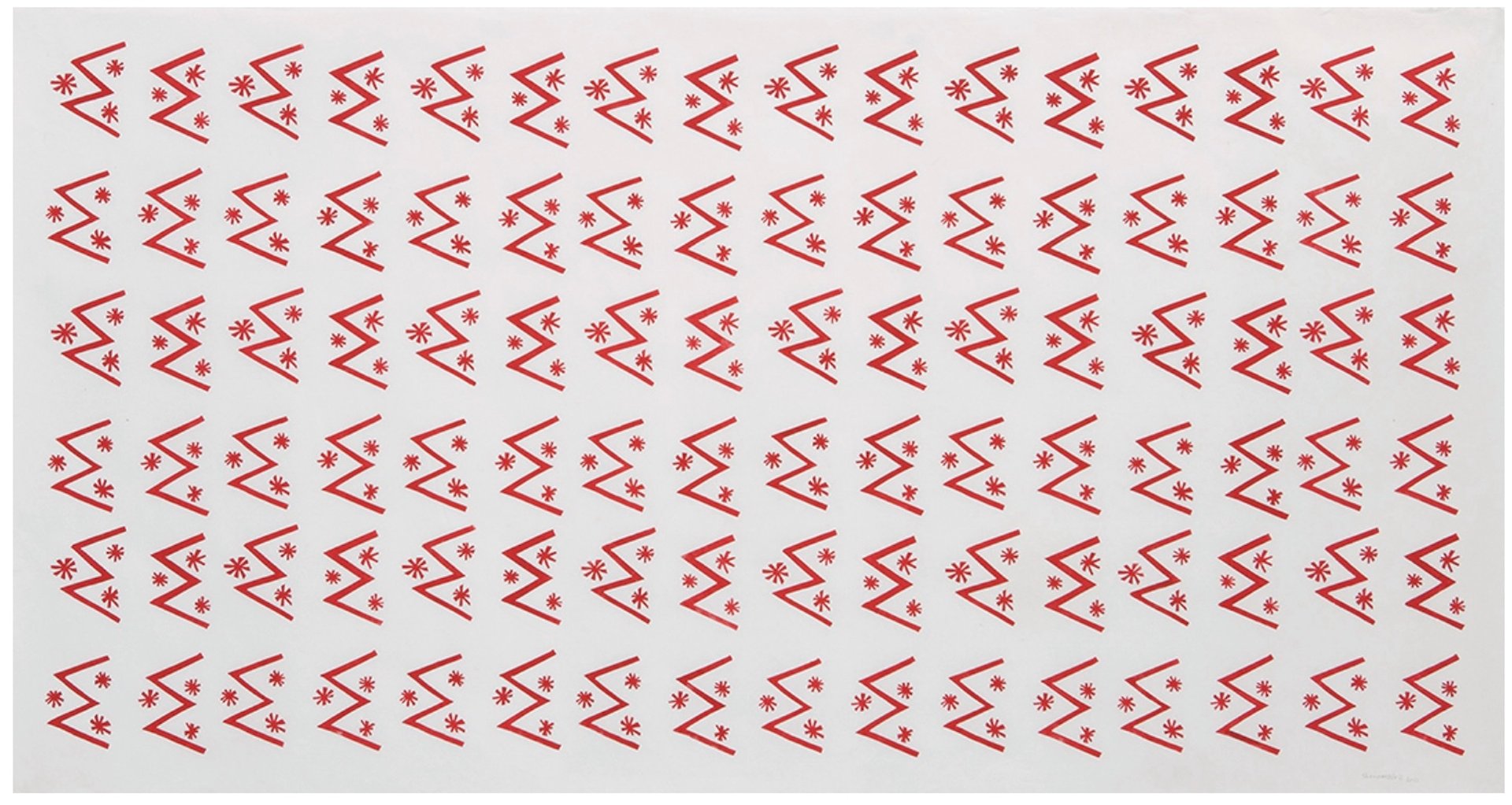
Sheroanawe Hakihiiwe, Mi oni (Pinta de cara), 2021 Courtesy Proxyco Gallery, Abra / María Teresa Hamon
Creating new markets is particularly important at a time when the global art trade is backsliding and whiplash changes to US policies and tariffs create uncertainty. This has directly impacted the fair’s dynamics. “When tariffs first took effect, a few US galleries withdrew—some later returned, while newcomers from Germany and Australia joined,” Nielsen says.
In spite of the shifting landscape, some remain confident as the Canadian art market heads into its busiest period of the year, with Art Toronto this week and Heffel’s marquee autumn auctions next month.
“One of Canada’s market strengths is its long-standing lack of dependence on the US, unlike other sectors,” says Marla Wasser, a Toronto-based art adviser and executive member of the Association of Professional Art Advisors. “Institutions and local collectors are very active, with a strong network of galleries, all supporting Art Toronto.” This dynamic is reflected in the fair’s other new section this year, Generations, which aims to offer an intergenerational portrait of Canadian art and is curated by Nielsen.
“Now more than ever, we need to unite through culture, creating genuine encounters,” Huber says.
- Art Toronto, 23-26 October, Metro Toronto Convention Centre


